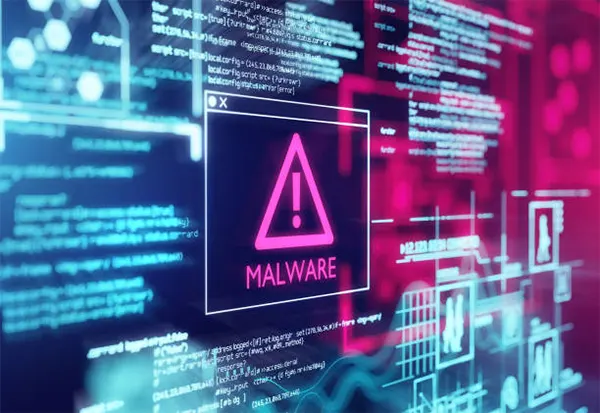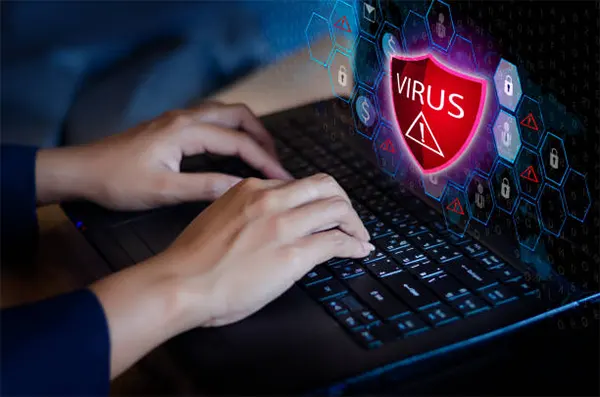Malware meaning malicious software is any kind of software or code that is designed to steal personal and financial data or gain unauthorized access by inflicting damage on computer or software systems.
Malware Explained: Malware Meaning, Detection, and Prevention

In today’s digital world, Internet safety remains a major concern. Malware prevention becomes a crucial step in maintaining digital safety and protecting data. One of the most persistent and prominent cyber threats to users’ data is malware, which compromises security, disrupts operations, and can cause significant financial damage.
Understanding the malware meaning and what does malware do is crucial, as all devices are vulnerable to malware. Once installed, malware has the ability to cause significant damage, including financial and credential loss.
- What is Malware?
- How Malware Can Infect Your PC
- Malware Attack: How Cybercriminals Execute Malware Through a Script
- Types of Malware You Should Know
- The Main Objective Behind Malware Attacks
- Malware Detection and Analysis
- How to Prevent Yourself from Malware Attacks?
- Conclusion: Detection and Prevention at the Right Time
- Frequently Asked Questions
What is Malware: Malware Meaning and Definition

What does malware do is that it infiltrates your system so that attackers or cybercriminals can extract data and steal sensitive information that they can leverage over victims for financial gain. It consists of a wide range of harmful programs, including viruses, adware, trojans, spyware, and ransomware.
Suggested Read: Remote Access VPN vs. Site-to-Site VPN: Key Differences
How Malware Can Infect Your PC
With the growing dependence on the internet for communication, banking, shopping, or work, attackers or cybercriminals have more opportunities to exploit users by stealing their personal or financial data. Understanding malware meaning and how it can infect your PC is important, as it is the software that you don’t want, but it will somehow end up on your device.
Malware can be installed on your system and can infect your PC through various methods, including email attachments, infected websites, and removable media like USB drives. Some common ways include:
- Infected websites or advertisements, as clicking on these can automatically install malware on your computer system.
- Email attachments and links, including phishing emails, are one of the most common ways for cybercriminals to infect your PC with malware.
- Infected removable media, like USB drives and hard drives, can be used to spread malware, as it is one of the easiest ways to install malware.
- Malicious software downloads, such as downloading software from unknown sources, can expose your system to malware. Malicious software usually includes free software or cracked versions.
- Hacked or compromised webpages can infect your PC with malware as well, or they can also spread through peer-to-peer file-sharing networks.
Malware Attack: How Cybercriminals Execute Malware Through a Script

Script-based malware attacks can easily bypass traditional security tools like antivirus software, which is why we are witnessing a significant increase in script-based attacks in recent times.
Types of Malware You Should Know
To protect your precious data from cybercriminals, understanding malware meaning and different malware types is crucial, as malicious programs can steal sensitive information, encrypt files, display unwanted ads, or even gain unauthorized access to computer systems.
We have listed several styles in the table below:
| Malware Type | Function |
| Viruses | It is the type of malware that replicates itself by attaching to other executable files or programs. These are the malicious programs that attach themselves to authorized files and spread when those files are executed or opened. |
| Worms | These are a type of malware that can self-replicate or copy themselves by exploiting some sort of security weakness or vulnerability in software. Worms, unlike viruses, don’t need a host program to execute, as they can run independently and spread autonomously. |
| Ransomware | Ransomware is one of the most popular and profitable types of malware, as it restricts the user’s access to computer systems or files and demands a ransom payment for their release. |
| Scareware | Attackers trick users using scareware into believing their computer is infected with malware and then offer a solution like a fake antivirus and rogue applications for a fee. |
| Trojans | A Trojan or a Trojan horse is a famous type of malware that appears as a harmless application to trick users into installing it. Once installed, they can steal personal or financial data, crash a device, and spy on activities. |
| Spyware | Spyware is a program installed on your computer designed to secretly collect information related to browsing history, financial data, and login credentials, or even keystrokes. It transmits this data to a third party without the user’s knowledge or consent. |
| Adware | These are installed in exchange for another service to display or download unwanted advertisements, often in the form of pop-ups, to generate revenue for the attacker. |
| Rootkits | Rootkits are a type of malware that enables cybercriminals to gain unauthorized access to a computer’s operating system and infiltrate data from machines without being detected. |
| Fileless Malware | It is a type of malicious software that operates without writing traditional files to a computer’s memory. Since it resides and executes within the computer’s hard drive or uses legitimate system resources, it is harder to detect and remove. |
| Cryptojacking | It is a type of cyberattack where the attacker uses a victim’s computer to mine cryptocurrency without their knowledge or consent. This is done by embedding malware that utilizes the victim’s processing power. |
The Main Objective Behind Malware Attacks
If you have understood the malware meaning, you must have a question about what is the main objective of malware. The main objective behind malware attacks is usually to gain monetary benefits or to cause harm or disruption to computer systems by stealing sensitive information or gaining unauthorized access.
Cybercriminals develop malware for various purposes, including
- Financial Gain: The main purpose behind malware attacks is motivated by monetary gain. Cybercriminals use malware such as ransomware to steal banking credentials, cryptocurrency wallets, or personal information that can be used to commit fraud.
- Data Theft: Some malware, such as viruses, worms, Trojans, and spyware, is used to steal sensitive information, like passwords, credit card details, personal data, and financial information.
- System Disruption: System disruption is to disrupt the normal functioning of computer systems or networks, causing denial of service, slowdown, crashes, and corruption of files.
- Cyber Espionage: Espionage is a form of cyber spying with the motive of acquiring sensitive or classified data from individuals, businesses, or government agencies.
- Unauthorized Access: Some malware allows cybercriminals to gain unauthorized access to your systems, which authorizes them to control your devices remotely. This can exploit a vulnerability and can trick users into taking an action that will further compromise their security.
- To Cause Reputational Damage: Cybercriminals can use malware to damage an organization’s reputation and destroy customer trust, leading to financial losses.
- Extortion: Malware can be used to lock files or to hold data or systems hostage, demanding payment to restore access.
Malware Detection and Analysis

It is important to analyze and detect any kind of malware that might be installed on your computer system or server. Since there are several malware types available for cybercriminals to steal your data, malware detection can help to identify malicious software, while analysis aims to study its objective, sources, functionality, and potential impact.
Analyzing the malware meaning and detecting it at the right time can stop some severe impacts. Some common signs that malware is already installed on your computer system or server are:
- Sudden slowdown of performance and frequent crashes or freezing.
- Unexpected pop-up of advertisements
- Increased CPU usage and reduced storage space.
- The browser will take you to different sites that you don’t intend to visit as the browser redirects.
- Unexpected or unfamiliar programs might keep launching automatically.
- Disabled security features, like antivirus software or Windows security features.
- Unauthorized activity on your accounts, including emails/social media activity.
- Some new programs or icons will display on your desktop that you haven’t installed.
How to Prevent Yourself from Malware Attacks?
Understanding what is malware and what certain precautionary measures to take is necessary in order to protect your precious data and maintain safety against these digital threats. We have enlisted some below:
1. Security Software
Using security software is considered one of the most effective ways to tackle these cybercriminals and protect your data. Security software includes antivirus software, Endpoint Detection and Response (EDR), and Intrusion Detection and Prevention Systems (IDS/IPS).
Installing and using antivirus or anti-malware software is necessary, as this software scans the system for known malware signs and suspicious behavior and can detect and remove malware.
2. Monitoring Online Activity and Avoiding Risks
Any kind of suspicious emails and attachments from any unknown source should be avoided.
You should download software and files only from trusted sources and avoid risky websites. Recognize phishing attempts and scams and keep away from clicking on unknown links.
3. Using A VPN
Use of a VPN can indirectly prevent malware by encrypting internet traffic and masking the IP address, which makes it difficult for cybercriminals to track and intercept data. Remote Access VPNs, Site-to-Site VPNs, and Mobile VPNs can also be used to encrypt the internet traffic and create a secure tunnel.
A Remote Access VPN provides remote access to the company’s network and helps keep the organization’s data secure by keeping digital certificates and passwords safe and can prevent reputational damage.
4. Keep Software Updated
Operating systems and applications, along with antivirus software, should be updated regularly. The latest security patch updates can help the system understand the malware meaning to detect and block the latest malware threats.
5. Detect and Remove Malware
Malware can be avoided by regularly keeping an eye out for any kind of suspicious or malicious activity that indicates your system is infected with malware.
If you notice any signs that your system or server can be compromised, quickly run a security scan to remove the malware. Change your passwords and enable two-factor authentication as well to restrict the attackers from accessing your personal information.
6. Back up Data Regularly
Regular backup of data is important to prevent data loss. Implement access control measures and enable ransomware protection to stay safe from any kind of ransomware attacks.
Conclusion: Detection and Prevention at the Right Time
Malware is considered one of the most dangerous and evolving cyber threats in today’s digital age. By understanding malware meaning, its various types, detection, and prevention steps, you can keep yourself safe from any kind of cyberattack.
By taking some necessary precautions and staying aware of online risks, you can avoid compromising your system and servers to these cyber threats and prevent data theft, financial loss, and any kind of reputational damage.
Frequently Asked Questions
What is malware?
What does malware do?
Malware can cause harm, damage, or disruption to computer systems or networks by stealing sensitive information, gaining unauthorized access, and damaging or destroying data.
What is the definition of malware?
Malware is defined as intrusive software developed by cybercriminals or attackers that accesses and monitors a user’s online activities or can acquire personal information without the user’s notice or consent.
How can an attacker execute malware through a script?
Cybercriminals perform malware attacks by stealthily deploying malicious code or a script file. These scripts use standard scripting languages to infect your PC, as they are fileless malware.
What are the types of malware?
Some common malware types include viruses, worms, ransomware, scareware, trojan horses, and spyware.
